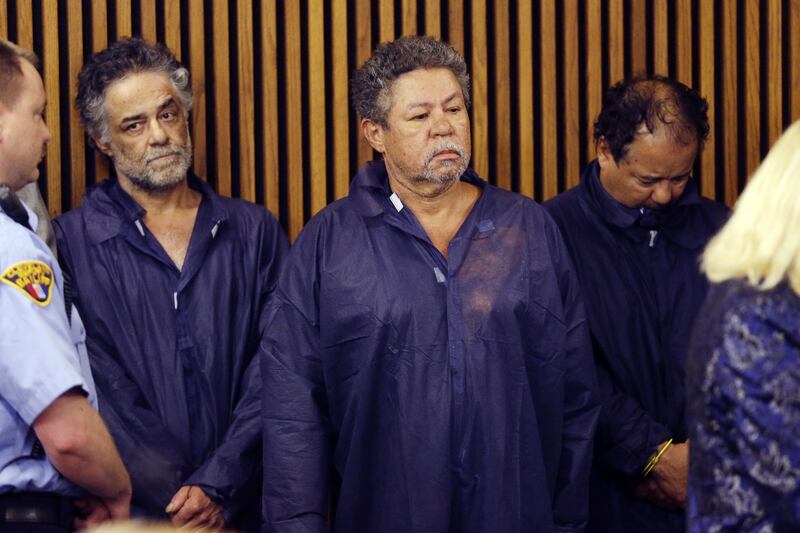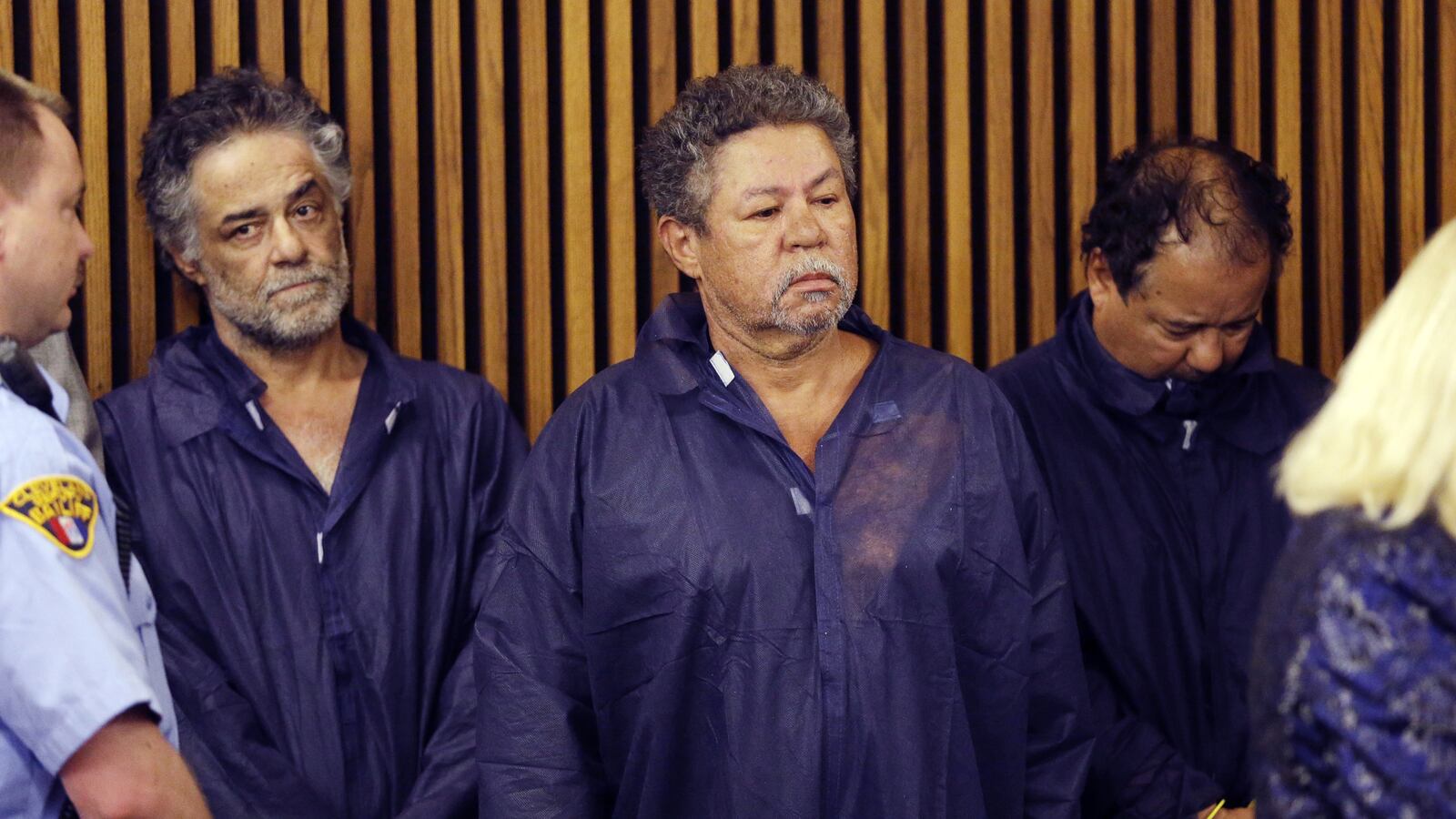Donna’s Diner is a lovely place. Perhaps you’ve heard of it—it’s located “At the Corner of Hope and Worry”?

Actually, the tiny eatery is in Elyria, Ohio. But it was given front-page New York Times treatment (and that schlocky headline) this past fall, when correspondent Dan Berry penned a long, quite saccharine article about the establishment; its down-to-earth owner, 57-year-old Donna Dove; and the ways in which its daily struggles echoed the yearnings of Middle America in the days before a presidential election.
Basically, this is Anytown, USA. It’s also just 30 miles from Cleveland, now the site of the most sensational American crime story in recent memory. So I thought it would be as good a place as any to gauge the pulse of the common, everyday working man and woman in this part of the country in regard to the dramatic escape of the three Cleveland women after a decade of depraved captivity.
I thought I was going into a time warp. Outside, the vehicle next to mine was sporting what appeared to be a brand-new Carter-Mondale bumper sticker.
The diner was about a third full as I made my way to the counter in the back. And sure enough, at two of the tables sat women wondering how those poor women would be able to go on with their lives after suffering such an ordeal. I ordered breakfast from a youngish woman who turned out to be Donna’s granddaughter Bridgette. While the kidnapping story had slipped below the fold on the front page of the local Morning Journal, it still was on the minds of the patrons of Donna’s—but uniformly in a caring manner, only concerned with the well being of the victims.
How predictable. Back home in Cleveland, darker thoughts prevailed.
With Amanda Berry, Gina DeJesus, and Michelle Knight now safely back home with relatives, thoughts are naturally turning toward their alleged captor, Ariel Castro, and what punishment is appropriate for an apparent monster who inflicted so much pain on chained-up and defenseless females—two of whom were mere teenagers when their ordeal started.
Close to the crime scene (in fact, a bit less than a mile away) sits one of Cleveland’s most famous landmarks: the Westside Market, which celebrated its 100th birthday in May of last year. The venerable institution anchors a plethora of small businesses within easy walking distance, many of them eating and drinking establishments.
Around there, the hot topic since County Prosecutor Tim McGinty publicly stated he’d seek the death penalty for Castro is what kind of justice—in prison or otherwise—the alleged rapist should be subjected to.
At the ABC Tavern, one of the oldest watering holes on the strip, four women were sitting at a table playing a version of what could be considered the newest parlor game: devising methods of torture for Ariel Castro.
Their minds were running to differing methods of castration (they even were joking about how the spelling of his last name lends itself to the act), with each women attempting to top the other. When one suggested using a dull knife to accomplish the task, another suggested an even duller set of pinking shears, followed quickly by a rusty razor blade and broken beer bottles being ground into his crotch. I couldn’t help but wince at that last one.
The chilling thing is, it was easy to get the sense that these women would actually carry out these grisly deeds given the opportunity. Heinous acts, especially when perpetrated on defenseless minors, elicit equally heinous responses even in sane minds.
At Kazman’s, a locally famous Hispanic eatery about a quarter-mile down the strip, men sat at a table gobbling down lunch. The talk went in a more “back door” direction if you will. But, similar to the conversation the women were having, it was designed for one purpose: to take Castro’s manhood, to render him impotent, harmless, broken. As broken as Michelle Knight, the last to leave the hospital this week, is reported to be.
Fantasies of Castro being repeatedly—perhaps even hourly—sodomized by that mythical prison monster Bubba (and all of his equally huge and vicious buddies), who extracts revenge on miscreants considered the lowest of the low, gleefully danced among the men sitting at the table. They wanted the line of men waiting, peckers in hand, to extend out of the shower, indeed, out of the cell block, all the way around the prison yard.
One of the men offered up the fact that for years he’s been staunchly against the death penalty, a position he’s willing to abandon in this case.
Monsters can drag us down to their level and make us into monsters ourselves if we’re not careful.
At the last eatery I visited, now full to overflowing with tidbits of conversation, the server, I soon discovered, also worked as a martial-arts instructor. The bouncy, beaming, and incredibly fit-looking petite blonde told me what she’s been touting since the story first broke as the perfect answer for what Castro should do: commit hara-kiri, the ritual suicide by disembowelment practiced by the Japanese samurai.
“It would be the most honorable thing for him to do,” the woman said to everyone and no one in particular as she maneuvered her way in between tables with her serving tray aloft. “They should put him in a cell with a strong hook hanging from the ceiling, and when he goes back to his cell after a shower or something, there should be noose on his pillow ... he’ll get the message ... it’s the only honorable thing to do, put an end to all of this madness.”
After thinking about her seemingly cruel suggestion for a few seconds, I saw the brilliance of her logic. As things now stand, these three women will probably have to relive their ordeal over and over again in court, perhaps over the next 15 to 20 years as his probable death-penalty case winds its way through the judicial system. Castro’s quick death would bring down the curtain on this grisly affair with what should be a sought-after and welcomed finality.
Case closed.






